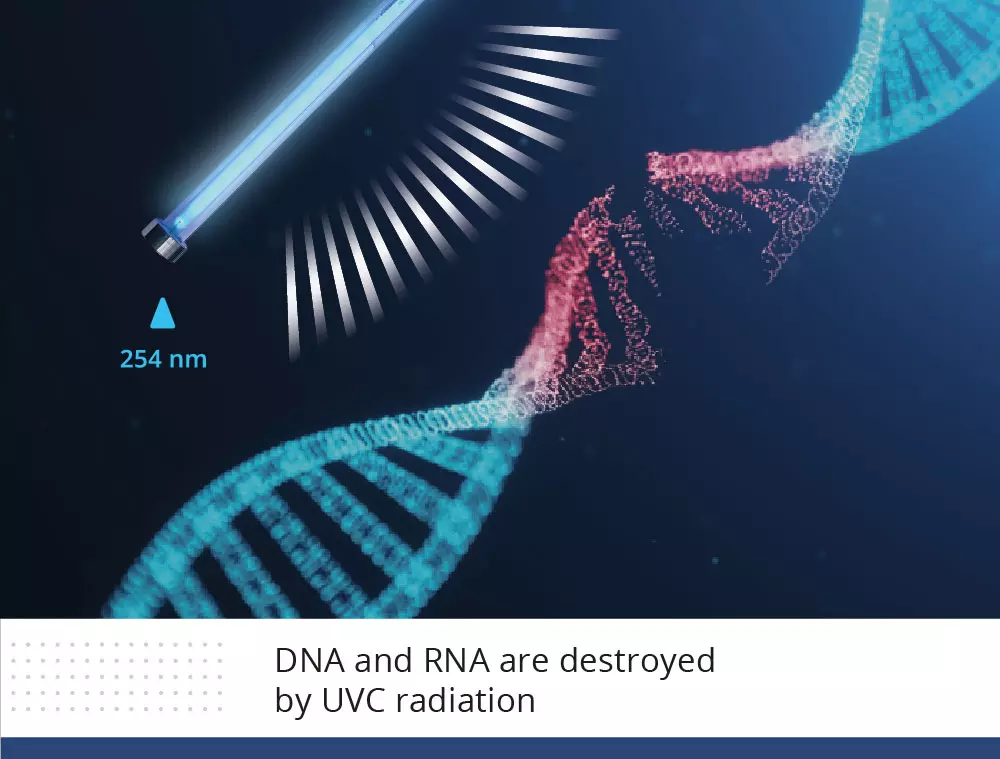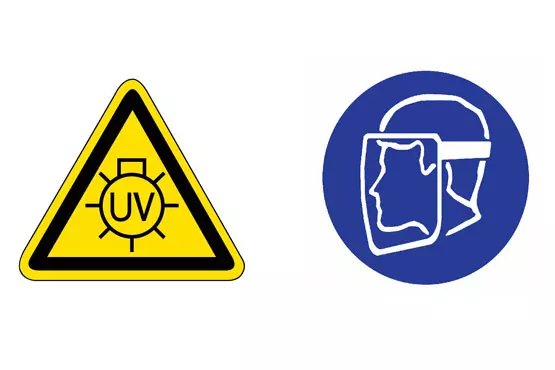Effect of UVC disinfection
Disinfecting with UVC light, a form of invisible optical radiation.
UVC as part of the light spectrum
Ultraviolet light, also known as ultraviolet radiation, is a crucial part of the light spectrum. This form of radiation has a shorter wavelength than visible light. Other invisible parts of the light spectrum include infrared and X-rays.
UV light can be divided into three categories: UVA, UVB, and UVC. For disinfection purposes, we use UVC. UVC light has a wavelength of 100 to 300 nanometer (nm) and is the most effective in the range of 240-280 nm.
Microorganisms absorb the energy from the UVC radiation. This disrupts their DNA, preventing them from multiplying. Our professional disinfection lamps primarily produce UVC light with a wavelength of 254 nm. This wavelength has the most powerful disinfecting effect.
Disinfecting effect
The radiation from UVC lamps damages the DNA of microorganisms and viruses, which keeps them from multiplying.
When the DNA is damaged, a photo-chemical effect occurs in the cell, leading to the formation of dimers. The adjacent Cytosine and Thymine molecules bind to each other instead of to the opposite base in the DNA molecule. After this, the DNA of the microorganisms and viruses is no longer usable, the cell dies and can no longer multiply.
The effectiveness of disinfecting with UVC light has been extensively researched and published by scientists from all over the world.

The relationship between dosage and result
For many microorganisms, we know what dosage is needed to critically damage a large part of the population. The specific dose that is needed to deactivate 90% of the population is called the D90 dose.
The required dose of UVC light varies among different types of microorganisms. Viruses and bacteria are very sensitive to it, while yeasts and moulds are much more resistant to UVC light.
In practice, this means that moulds need a longer exposure time or a more powerful UVC lamp for effective disinfection.
What are the risks?
UVC is invisible, but UVC bulbs emit a blue light as a by-product that has no disinfecting effect. It serves a practical function, letting you know that the bulb is switched on.
UVC radiation is dangerous to skin and eyes, so it's best to avoid exposure. All installations should be shielded and proper protective equipment such as a face masks and skin covering should be used during testing and maintenance.
Effect on skin:
Because UVC does not have an infrared component like sunlight, you won't feel its effects, but it can cause redness and a burning sensation on the skin fairly quickly.
Effect on the eyes:
UVC does not penetrate into the eye, but corneal irritation can occur a few hours after exposure. It causes a painful, burning sensation that's also known as "welder's eye" or "snow blindness".




